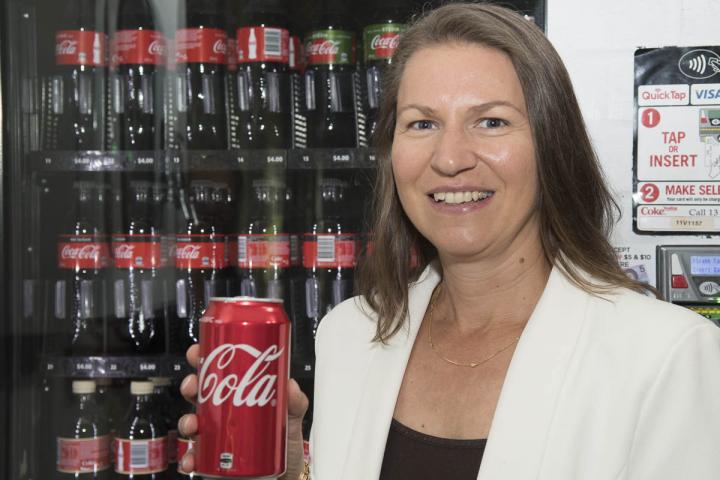TV marketing lures some consumers more – study

Credit: Flinders University
What keeps consumers hooked on high sugar soft drink? Advertising, of course. But why are some consumers more adept at ignoring these cues than others?
A new study from Flinders University, published in Appetite, found participants with an automatic bias towards soft drinks – or difficulty resisting sweet drinks compared to non-sweetened control beverages (e.g., water) – were more responsive to the ads than those without these tendencies.
The Australian study compared the ability of 127 university-age students (18-25 year olds) to withstand or succumb to the urge to reach for a soft drink when viewing television advertisements.
“Perhaps, then, we can start targeting people who show these cognitive vulnerabilities in reduce consumption of these sugary, unhealthy drinks,” says lead researcher Flinders University Professor Eva Kemps.
“Even keeping fizzy drinks from children at a young age may also prepare them for the barrage of advertising as they mature,” says Professor Kemps, pointing to the rise in soft drink consumption in the face of associated health risks.
Not only can regular soft drink consumption lead to weight gain and tooth decay, with a typical 375ml can of soft drink contain about 10 teaspoons of sugar, but so can these ’empty’ calories reduce intake of calcium, fibre and other nutrients in a healthy diet.
Regular soft drink consumption (as little as 1 can per day) has been associated with increased risk of diabetes, cardiovascular disease and various cancers, with one data model estimating the global death toll from soft drink consumption to be around 184,000 deaths per year.
Around the world, the daily caloric intake from soft drinks has quadrupled, from 4% in 1965 to 16% in 2019 with young adults and adolescents the biggest consumers of popular brands of carbonated beverages such as Coke, Sprite and Fanta.
Australian Bureau of Statistics (2015) research estimated 50-60% of adolescent and young people consume soft drink every day.
While the US has seen a recent decline in its leading per capita soft drink consumption, the Appetite article says consumption of high-sugar drinks is rising in other countries such as Mexico, Chile and Argentina.
At the same time, beverage companies in the US spent more than $1 billion on soft drink advertising in 2019 (Sugary Drink FACTS, 2020).
“The cognitive vulnerabilities exposed in our study is an important lesson to future possible regulation of television advertising or public health campaigns,” says co-author Amber Tuscharski.
“More could be done to raise awareness among people who have strong automatic tendencies or poor self-regulatory control towards reaching for a soft drink.
“After all, their exposure to soft drink cues will continue as manufacturers and marketers advertise their products in multiple locations – from TV commercials to in-store, service stations, public transport and billboards.”
###
The article, The effect of television advertising on soft drink consumption: Individual vulnerabilities in approach bias and inhibitory control (2021) by Eva Kemps, Marika Tiggemann and Amber Tuscharski, has been published in Appetite (Elsevier).
This research was supported under the Australian Research Council’s Discovery Project funding scheme (project number DP180100545).
Media Contact
Professor Eva Kemps
[email protected]
Related Journal Article
http://dx.




